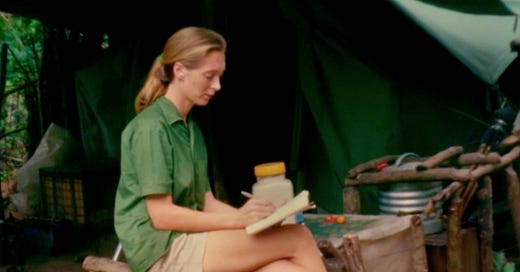At the age of 26, Jane Goodall (b. 1934) traveled to Tanzania to fulfill her life-long dream of studying animals. With only a pencil, notebook, and binoculars, her discoveries would fundamentally shift our understanding of what it means to be human. In the early 1960s, little was known about our closest relative, the chimpanzee. Jane’s discoveries helped revise scientific understanding. Once she witnessed chimps using tools to get at termites, scientists could no longer claim that humans were the only tool-using animal.
Goodall was as dedicated to her note-taking as she was to the chimps she studied. She innovated unique note-taking methods to support her unique study. So join me on an exploration of Jane’s note-taking habits during her time in Gombe Stream National Park.
These post-scripts offer paid subscribers a deeper dive into the notes I cover in Noted’s regular posts. You can read my full post on Naturalists’ notes for free here. If you enjoy Noted, please help sustain it by becoming a paid subscriber.
Keep reading with a 7-day free trial
Subscribe to Noted to keep reading this post and get 7 days of free access to the full post archives.





